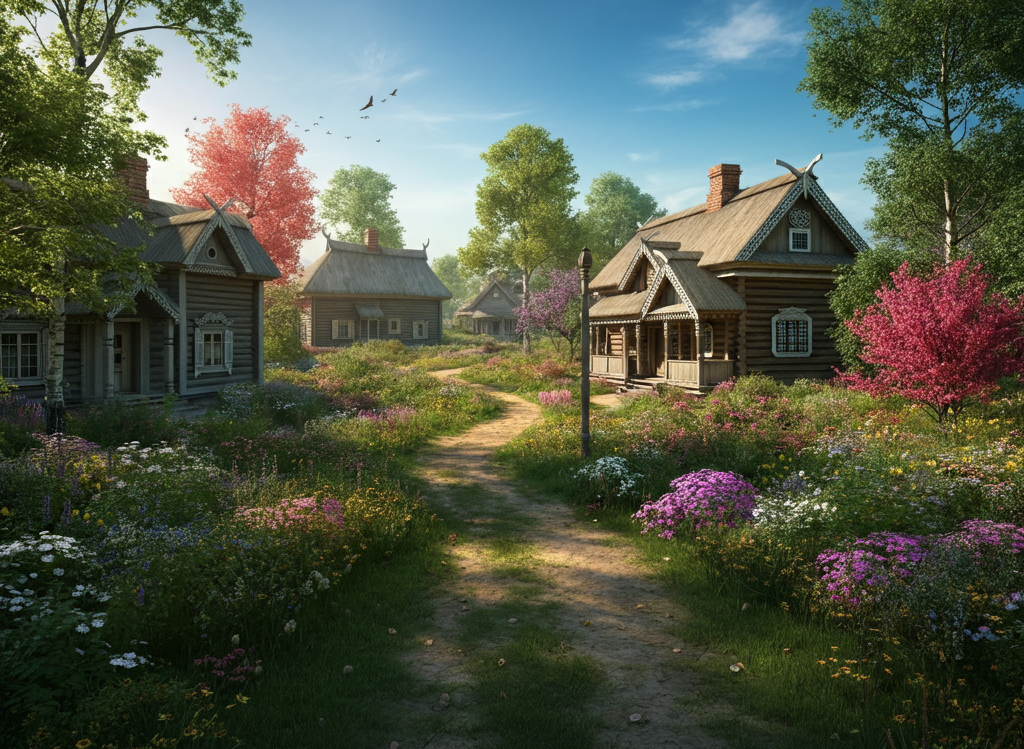Can one word encompass the soul of a people and the wisdom of generations? In Lithuania, “sodziu” does just that. It’s more than a name for a village—it’s a living tapestry of heritage, kinship, and resilience, woven through centuries of change. Stepping into the world of sodziu, you discover not just the echoes of the past but a vibrant philosophy for today and tomorrow.
Below, we’ll explore sodziu’s deep historical roots, its inspiring adaptations in our digital age, and practical ways to bring this tradition—and its values—into your own life. Drawing on insights from cultural experts and community members, this guide shows why sodziu remains both timeless and urgently relevant in the 21st century.
Table of Contents
ToggleThe Historical Roots of Sodziu
At its heart, sodziu stands for communal living—a philosophy that guided Lithuanian villages for generations. While “sodziu” might simply translate to “village,” its true meaning is far richer: a place where connection with the land and fellow humans was paramount. Dr. Dalia Žemaitė, a historian at Vilnius University, notes, “Village life in Lithuania exemplified cooperation and mutual aid, especially during harvests, major festivities, and times of hardship. Sodziu was a model for sustainable, resilient living.”The Birthplace of Heritage and Belonging
Centuries ago, sodziu villages were built around collective work and shared rituals. Families collaborated in fields and kitchens, passing on agricultural wisdom and recipes—like honey cakes and rye bread—across generations. As the seasons shifted, sodziu communities celebrated ancient festivals such as Joninės and Užgavėnės, reaffirming their unity and respect for nature’s cycles. Even after Christianity arrived, many customs endured, blending old and new. This unique evolution is well-documented in Lithuanian ethnography journals.Architecture as a Window into Sodziu’s Soul
Sodziu homes—modest yet artfully crafted—reflect a deep connection to place. Typical sodziu villages clustered wooden homes near a main road, their porches lined with flowers and gardens bustling with life. Carved shutters and symbolic carvings bore each family’s mark, communicating pride and continuity. “Every sodziu was a microcosm of Lithuanian creativity and ecological practicality,” shares Gintas Vaitiekūnas, restorer of historic sodybos. Although wars and Soviet repression disrupted village life, the essential character of sodziu—a spirit of sharing, storytelling, and perseverance—remained unbroken.Modern Adaptations in the Digital Age
Despite the rapid shift to urban and digital lifestyles, sodziu hasn’t faded. Instead, it’s experienced a renaissance, proving itself adaptable and meaningful in today’s interconnected world. Cultural organizations, such as the Lithuanian Folk Art Institute, have helped archive and revitalize sodziu crafts and narratives for broader audiences.Social Media as a Cultural Bridge
From Instagram feeds to YouTube tutorials, sodziu traditions have found new homes online. Hashtags like #SodziuChallenge inspire creative reinterpretations of folk art, food, and celebrations. Even diaspora Lithuanians—living as far away as Chicago and Melbourne—now participate in virtual workshops to learn straw weaving (“sodai”) or traditional dances. According to cultural ambassador Raminta Milušauskaitė, “Digital platforms have sparked curiosity and pride, bringing young people back to their roots while building international connections.”Blending Old and New in Festivals
Traditional festivals flourish in both the physical and digital realms. Community-organized livestreams of Joninės or regional fairs allow Lithuanians worldwide to reconnect with ritual songs, costumes, and harvest feasts. Meanwhile, local festivals keep evolving—mixing time-honored crafts with contemporary art and music, offering visitors a journey through Lithuania’s living culture. This fusion keeps sodziu relevant and allows traditions to remain dynamic and inclusive.Practical Guide for Experiencing Sodziu
If you’re curious about bringing sodziu into your life—whether through authentic travel, culture, or daily practices—there are more options now than ever before.- Visit an authentic sodziu village. Explore preserved regions like Rumšiškės, Marcinkonys, or the Samogitian countryside. Many offer sodybos (guesthouses), run by locals who share stories, crafts, and home-cooked meals. Ethnographers recommend staying longer to fully absorb the rhythms of rural life.
- Try traditional crafts hands-on. Many museums and cultural centers now offer workshops in wood carving, weaving, and sodai-making. Don’t be afraid to make mistakes—local artisans agree that imperfection is part of the learning journey. “Every straw and knot holds a bit of your story,” notes master weaver Ona Jasiūnienė.
- Cook as Lithuanians do. Channel sodziu’s resourcefulness by making cepelinai (potato dumplings), šaltibarščiai (beet soup), or barley porridge. Online recipe guides and YouTube channels led by home cooks make these dishes accessible (and fun to attempt, even if the shape is a bit wonky!).
- Experience sodziu festivals. If you time your visit, be sure to catch a local celebration. Midsummer bonfires, masked parades, and autumn harvest meals all welcome guests. For those far from Lithuania, Lithuanian-American and -Canadian communities often host vibrant festivals worth seeking out.
- Adopt sodziu values at home. You don’t have to move to Lithuania to live its values. Host a communal meal, plant a windowsill herb garden, or challenge yourself to unplug during meals. Sodziu’s lessons—connection, sustainability, reflection—translate anywhere, anytime.

